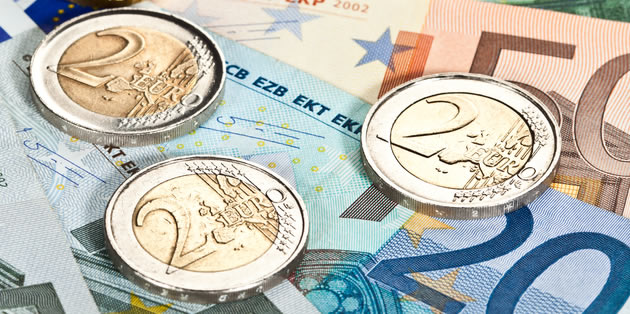EUR/GBP Exchange Rate Predicted to Soften after Negative Eurozone Inflation Weighs on Sentiment
The Euro to Pound Sterling (EUR/GBP) exchange rate ticked lower by around -0.2% on Thursday afternoon.
After yesterday’s European data showed consumer prices in the currency-bloc dropped into negative territory, demand for the shared currency declined significantly. The dip into deflation has provoked traders to speculate that the European Central Bank (ECB) will look to expand quantitative easing in order to stimulate price pressures in the Euro-area. However, some analysts fear that central bank intervention won’t have the desired impact. Jean-Michel Six, Standard & Poor’s chief economist for Europe, said: ‘As emerging market currencies have declined; the Euro has begun to appreciate again, complicating the ECB’s QE programme which is meant to jumpstart Eurozone growth and lift inflation expectations.’
Thursday’s European economic data produced mixed-results. The publications have had minimal impact, however, with trader focus dominated by potential ECB stimulus. Whilst manufacturing output in France bettered estimates, Italian and German manufacturing failed to meet with expectations. Eurozone manufacturing output equalled the median market projection of 52.0.
The Euro to Pound Sterling (EUR/GBP) exchange rate is currently trending in the region of 0.7368.
GBP/EUR Commercial Spot Rate Forecast to Hold Gains after UK Manufacturing Betters Estimates
Britain’s solitary economic data publication on Thursday printed positively which allowed the Pound Sterling to edge higher versus most of its major peers. The Markit UK Manufacturing PMI bettered the median market projection of a drop from the positively revised previous figure of 51.6 to 51.3, with the actual result only falling to 51.5. Sterling gains have been somewhat sluggish, however, as the data still points towards general stagnation in the sector.
Rob Dobson, Senior Economist at survey compilers Markit, stated; ‘The UK manufacturing sector remained sluggish at the end of the third quarter, stunned by a triple combination of a sharp slowdown in consumer spending, weak business investment and stagnating export order inflows. The survey is still broadly consistent with stagnation, or even a mild downturn, when compared to official data. Although some respite will have been felt through a sharp decrease in average input costs, the steepest in over 16 years, the generally lacklustre operating environment nonetheless encouraged firms to scale back employment for the first in two and-a-half years. Job cuts send a signal that manufacturers are becoming more cautious about the future, which may lead to a further scaling-back of production at some firms in coming months. The ongoing malaise of the manufacturing sector will add to broader growth worries and supports dovish calls for a first rise in interest rates to be held off until industry returns to a firmer footing.’
The Euro to Pound Sterling (EUR/GBP) exchange rate dropped to a low of 0.7354 today.
Euro to Pound Sterling Exchange Rate Forecast to Hold Gains ahead of US Manufacturing Data
Given the absence of further British and European economic data publications to provoke changes for the Euro to Pound Sterling (EUR/GBP) exchange rate, the UK asset is likely to hold gains over its closest neighbour. With that being said, the shared currency could see movement in response to US manufacturing data given the EUR/USD negative correlation.
Looking ahead to Friday, European economic data will be thin on the ground with only the Eurozone Producer Price index due for publication. Given recent inflation figures in the Eurozone have been poor, producer prices are expected to be weak. In terms of British data, the UK Construction PMI for September has the potential to cause Sterling movement.
The Euro to Pound Sterling (EUR/GBP) exchange rate climbed to a high of 0.7389 during Thursday’s European session.



